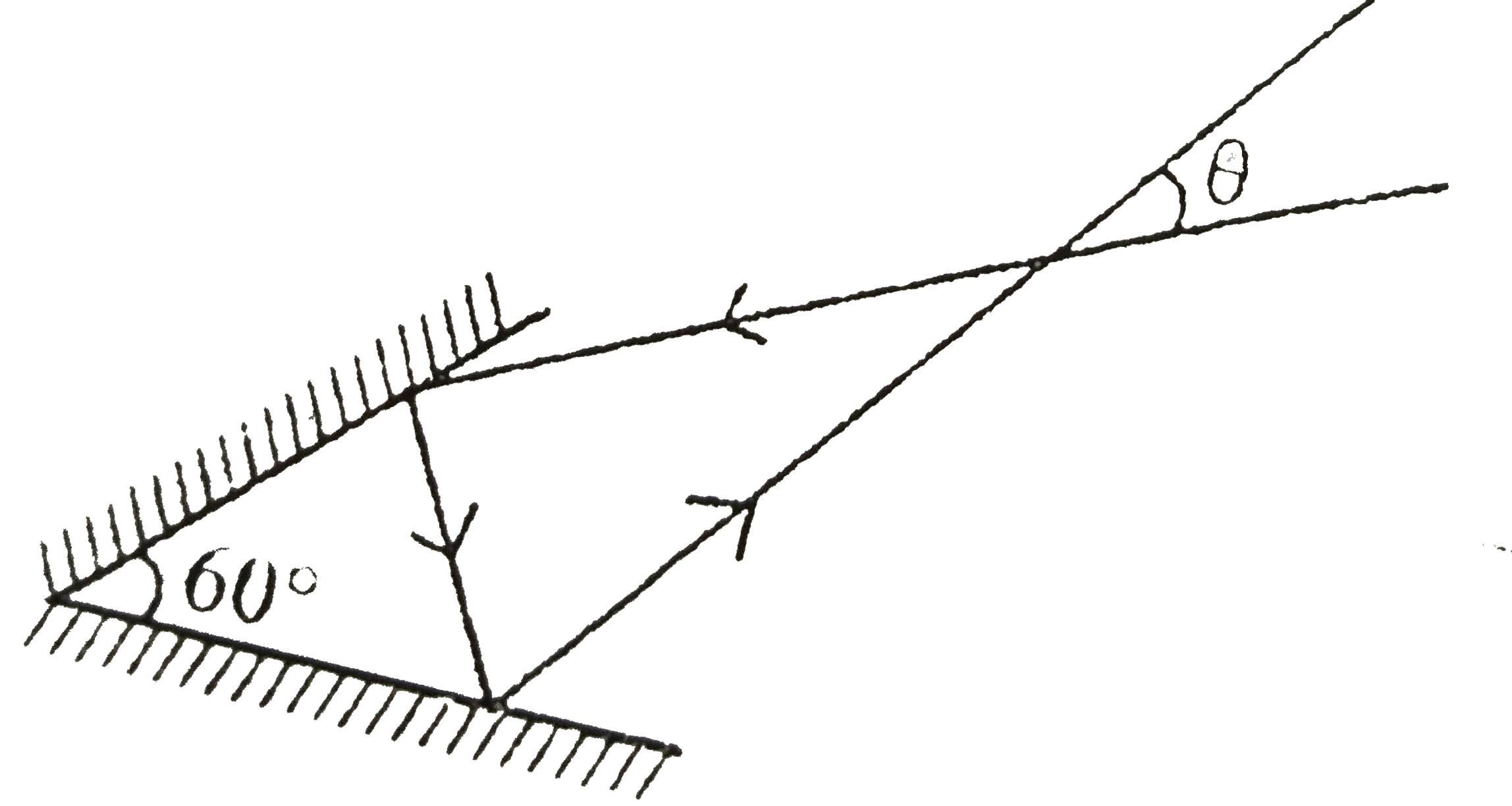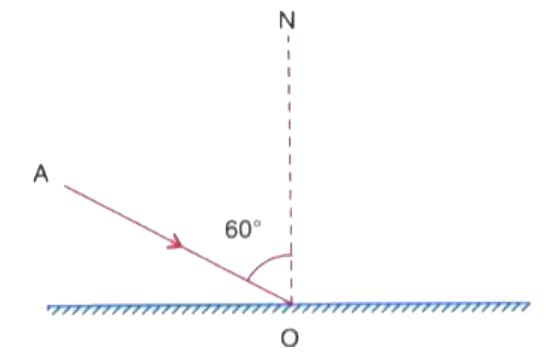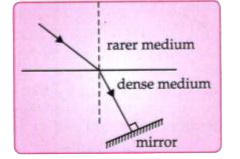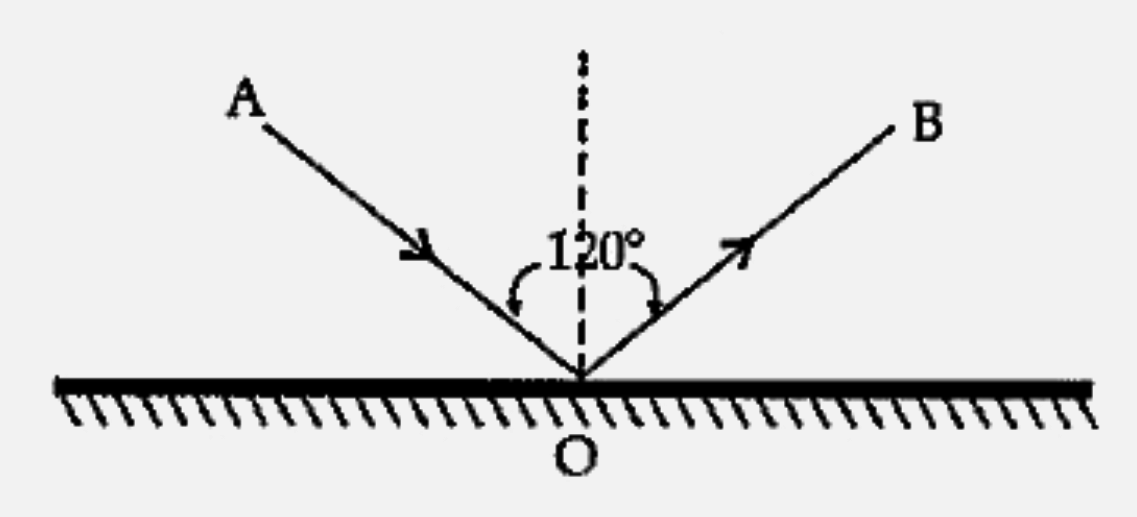A light ray is incident normally on a plane mirror.
What is the direction of reflected ray? Show it on a diagram.
To solve the problem of determining the direction of the reflected ray when a light ray is incident normally on a plane mirror, we can follow these steps:
1. Understanding Normal Incidence:
- When a light ray is said to be incident normally on a plane mirror, it means that the light ray strikes the mirror at a right angle (90 degrees) to the surface of the mirror.
2. Identifying the Angle of Incidence:
- The angle of incidence is defined as the angle between the incident ray and the normal (an imaginary line perpendicular to the surface of the mirror at the point of incidence). Since the light ray is incident normally, the angle of incidence is 0 degrees.
3. Applying the Law of Reflection:
- According to the law of reflection, the angle of incidence is equal to the angle of reflection. Therefore, if the angle of incidence is 0 degrees, the angle of reflection will also be 0 degrees.
4. Determining the Direction of the Reflected Ray:
- Since both the incident ray and the reflected ray make 0 degrees with the normal, the reflected ray will travel in the same line as the incident ray but in the opposite direction.
5. Drawing the Diagram:
- To illustrate this, draw a horizontal line to represent the plane mirror. Draw an arrow pointing towards the mirror to represent the incident ray. Then, draw another arrow pointing away from the mirror in the opposite direction to represent the reflected ray.
Diagram:
||Ref≤ctedRay(oppositedirection)|<−−−−−−−−−−−−−−−−||IncntRay|−−−−−−−−−−−−−−−→∣−−−−−−−−−−−−−−−−−−−−(Pla≠Mirror)
Conclusion:
The direction of the reflected ray is opposite to that of the incident ray, and both rays lie along the same line.
---
- When a light ray is said to be incident normally on a plane mirror, it means that the light ray strikes the mirror at a right angle (90 degrees) to the surface of the mirror.
- The angle of incidence is defined as the angle between the incident ray and the normal (an imaginary line perpendicular to the surface of the mirror at the point of incidence). Since the light ray is incident normally, the angle of incidence is 0 degrees.
- According to the law of reflection, the angle of incidence is equal to the angle of reflection. Therefore, if the angle of incidence is 0 degrees, the angle of reflection will also be 0 degrees.
- Since both the incident ray and the reflected ray make 0 degrees with the normal, the reflected ray will travel in the same line as the incident ray but in the opposite direction.
- To illustrate this, draw a horizontal line to represent the plane mirror. Draw an arrow pointing towards the mirror to represent the incident ray. Then, draw another arrow pointing away from the mirror in the opposite direction to represent the reflected ray.
||Ref≤ctedRay(oppositedirection)|<−−−−−−−−−−−−−−−−||IncntRay|−−−−−−−−−−−−−−−→∣−−−−−−−−−−−−−−−−−−−−(Pla≠Mirror)
The direction of the reflected ray is opposite to that of the incident ray, and both rays lie along the same line.
Topper's Solved these Questions
- BOOK - ICSECHAPTER - LIGHTEXERCISE - TOPIC 1 Reflections of Light (3 Marks Questions )19videos
LIGHT
- BOOK - ICSECHAPTER - LIGHTEXERCISE - TOPIC 1 Reflections of Light (4 Marks Questions )10videos
LIGHT
- BOOK - ICSECHAPTER - LAWS OF MOTIONEXERCISE - EXERCISE - 3(E) (Numericals)31videos
LAWS OF MOTION
- BOOK - ICSECHAPTER - MAGNETISM EXERCISE - EXERCISE-10(B) (Multiple Choice Type)2videos
MAGNETISM
Similar Questions
A light ray is incident normally on a plane mirror.
What is the direction of reflected ray? Show it on the diagram.View SolutionA light ray is incident normally on a plane mirror.
What is the angle of incidence?View SolutionA light ray is incident normally on a plane mirror.
What is its angle of incidence?View Solutiona light ray is incident normally on a plane mirror.
a. What is its angle of incidence?
b. What is the direction of reflected ray? Show it on a diagram.View SolutionA ray of light falls normally on a plane mirror. What is the angle of incidence ?
View SolutionA light ray is incident on a plane mirror, which after getting reflected strikers another plane mirror, as shwon in figure. The angle between the two mirrors is 60∘. Find the angle 'θ' shown in figure.
 View Solution
View SolutionThe diagram in Fig. shows an incident ray AO and the normal ON on a plane mirror. Draw the reflected ray. State the law you use to draw the direction of the reflected ray.
 View Solution
View SolutionA ray of light is moving from a rarer medium to a denser medium and strikes a plane mirror placed at 90∘ to the direction of the ray as shown in the diagram.

Name the principle you have used to mark the arrows to show the direction of the ray.View SolutionA ray of light is incident normally on a plane glass slab. What will be (i) the angle of refraction, and (ii) the angle of deviation for the ray ?
View SolutionThe diagram below shows a light ray striking and reflecting from a plane mirror AO is the incident ray and OB the reflected ray. The angle between the incident ray and the reflected ray is 120∘.

What is the value of the angle of reflection?View Solution

